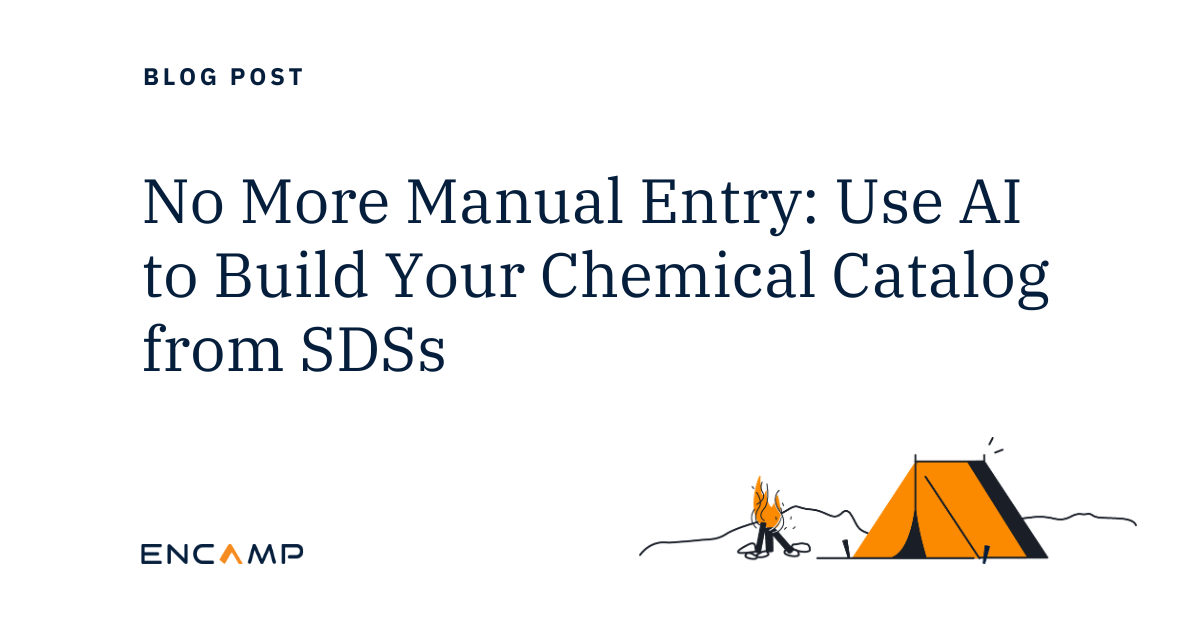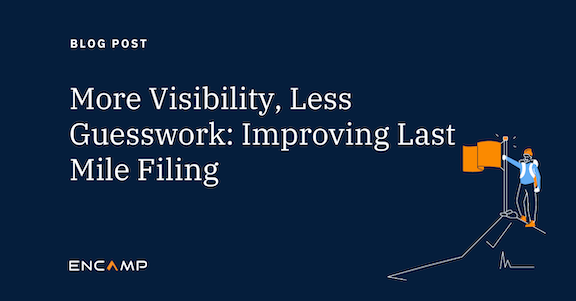Reporting your facility’s chemicals for Tier II can be a confusing task. Depending on your inventory, you may have difficulty with mixtures, lead acid batteries, or understanding your state requirements and using their portal. To help with your Tier II reporting efforts, we tackle each one of these here.
Three Issues to Clarify for Tier II
Mixtures
There’s a lot of confusion surrounding mixtures and how to report them in a Tier II scenario. Do you report each chemical separately within the mixture? Or should you report the mixture as its own chemical? EPA guidance recommends two methods:
- Report each constituent individually. With this option, the percent weight of each component will need to be converted to pounds by using the mass of the mixture. After each component has been converted, aggregate the amount with any other instances of the same component.
- The other option is reporting the mixture as a whole. If the components are unknown (such as trade secrets), the chemical must be reported as a mixture.
The following examples are from the Texas Commission on Environmental Quality (TCEQ):
In the example here, the mixture X-Chem weighs 20,000 lbs. and contains 20% of the hazardous chemical “Chemical A”, which is listed as an EHS, and 80% water:
- Hazardous component example:
- a. Weight of Chemical A= 20,000 x 20% = 4000 lbs
- b. Weight of Water = 20,000 x 80% = 16,000 lbs.
- Report 4,000 lbs of Chemical A in the Tier II Report.
- Whole Mixture Example:
- a. Weight of X-Chem = 20,000 lbs.
- Report 20,000 lbs of the mixture in the Tier II Report.
- b. You would also list the 4,000 lbs of Chemical A under the Mixture Components because it is an EHS.
- Mixture X-chem
- Ingredient names Product Identifier (CAS No.) Percent (%)
- Chemical A (EHS) XXXX-XX-X 20
- Water XXXX-XX-X 80
- *You do not have to count a hazardous chemical present in a mixture if the concentration is less than or equal to 1%, or less than or equal to 0.1% for a carcinogenic, or potentially cancer-causing chemical.
According to EPA Guidance for Tier II, whichever way is chosen to report mixtures, the manner must be consistent between Section 311 Reporting and Section 312 Reporting.
Lead-acid batteries
The batteries in powered industrial trucks, such as forklifts and man lifts, contain lead and sulfuric acid. According to OSHA, they are a hazardous chemical because of the “potential to emit hydrogen gas which, upon ignition, may result in a fire or explosion.” The batteries do not fall under the article exemption either because they “have the potential to leak, spill, or break during normal conditions of use, including foreseeable emergencies,” according to the EPA’s memorandum on reporting these batteries. Because of this, it’s important for Tier II purposes to review how many batteries your facility stores and uses to determine if they exceed the threshold.
In the eyes of the EPA, lead-acid batteries are considered a mixture of sulfuric acid and lead. If you take a look at the safety data sheet (SDS) for a lead-acid battery, it generally contains between 40-75% lead (or lead compounds) and 20-45% sulfuric acid. Sulfuric acid is listed as an EHS chemical with a TPQ of 1,000 pounds. Therefore, the threshold would default to the 500 pounds threshold because it is an EHS. Lead-acid batteries can weigh anywhere from 39 pounds to upwards of 4,000 pounds. Because of the 500 pound threshold for sulfuric acid, facilities with even just one battery may be required to report. If your facility has several smaller batteries onsite, the amount of sulfuric acid in each battery needs to be aggregated with all sulfuric acid on-site to determine if that threshold has been met or exceeded.
For Tier II reporting, once you’ve determined whether the threshold for sulfuric acid has been reached, you may report the battery as a mixture or you can report the sulfuric acid separately as an EHS. However, the regulations state that “reporting a mixture, such as the batteries, under both Sections 311 and 312 must occur in the same manner, where practicable.” Most battery manufacturers publish SDSs for their batteries as a mixture, rather than the individual components. However, if you’re replenishing the electrolyte or manufacturing batteries, then it may make sense to report as individual components.
Some states have released guidance on reporting lead acid batteries, so double check with your facility’s state program prior to reporting these. (Illinois is one example. See page 14 of that state’s reporting instructions document.)
Aggregation of hazardous chemicals and EHSs
Many oil and gas companies and manufacturers have several types of oils and oil-based products on-site. There is a lot of confusion out there, on whether these need to be aggregated across the facility or not. The EPA has published guidance on this, which states that there are two ways to determine if aggregation of hazardous chemicals makes sense.
First, it’s recommended to review your products in question and review their SDSs. A facility can have two or more SDSs for chemicals onsite. For example, a facility can receive multiple SDSs for essentially the same material, but its provided by different suppliers. If the mixtures are represented by SDSs that are identical in composition and physical and health hazards, these mixtures can most likely be aggregated to determine if they exceed the threshold. If however, “two or more chemical combinations are represented by different SDSs and present different physical or health hazards, they would not be aggregated for §§311/312 purposes.”
The determination to aggregate similar hazardous chemicals is generally left up to the owner and operator (or their authorized representative) to make that call.
For EHSs, EPA has stated that these chemicals must be aggregated across mixtures and pure chemicals. For an example, if your facility has several lead acid batteries on-site, the sulfuric acid in each of those must be aggregated to determine if you have more than 500 pounds. If you also have pure sulfuric acid that’s used in a separate process, you will have to account for that when aggregating. If an EHS is present in a mixture over 1%, it must be accounted for in your calculations for the total EHS present on-site, regardless of what container the chemical is in. This may require you to examine reaction vessels, piping, and other process components.
State requirements and submission portals
Another common issue with Tier II reporting is determining what your state requires for reporting and how the state wants to receive that information. States like California, Louisiana, and New Jersey have thresholds that differ from the federal thresholds. Many states require additional information on the chemicals and the facilities that report. Contact your State Emergency Response Commission (SERC) or visit their website to find out their specific requirements.
On top of the varying thresholds and specific state requirements, there are several ways that the chemical inventory can be submitted to your state. Check out the below map to see what ways your state(s) require this information to be submitted. Many states require you to complete the report through Tier2 Submit. Tier2 Submit is software that EPA developed to help eliminate the paper reporting burden. The software must be downloaded each year onto your computer in order to use it. The software is normally updated in November of the year prior. Tier2 Submit doesn’t actually submit the information to your facility’s SERC, LEPC, or Fire Department though, despite its name. Most SERCs require you to download the information from Tier2 Submit and submit the file through email, their own portal, or even on a CD/SD and mail it to the SERC.
Other states have opted to use a full reporting and submittal platform like Tier II Manager. Several states like Indiana, Delaware, Oregon, and Nevada have all adopted Tier II Manager as their portal for Tier II reporting. Another portal that some states have adopted is E-plan. E-plan was developed by the University of Texas-Dallas. Other than Tier2 submit, Tier II Manager, and E-Plan, some states have created their own portal for submitting the report like California, Texas, Missouri, and Louisiana. Each portal has its pros and cons, but digitizing this information has proven to be very beneficial to the regulated community, emergency responders, and state and local officials.
Common Tier II reporting errors
In addition to some of the ambiguities surrounding Tier II mentioned above, there are some common reporting errors that SERCs have identified.
- One of the most common mistakes is incorrectly designating EHSs or failing to designate a chemical as an EHS. Double check that all of your reported chemicals are not on the EHS list. See the list here.
- Another common reporting mistake is listing a contact that is not familiar with Tier II reporting. The person that is listed should be knowledgeable about the report and the chemicals onsite. If the SERC, LEPC, or local fire department needs to ask the facility a question, they’ll contact the person listed on the report.
- As mentioned above, some states require additional information about the chemicals or the facility itself. Another common mistake is leaving those questions blank or answering them incorrectly. Many states require more information regarding the EHSs that are onsite, like mode of shipment, container type, and container size.
- Based on ECHO data, EPA settled 28 cases related to EPCRA violations in EPA’s fiscal year 2018. The penalties assessed from those cases amounted to $473,867. Several of those penalties stem from not completing the report at all. Some of them are for not reporting specific chemicals correctly or at all. Source: https://echo.epa.gov/facilities/enforcement-case-search/results
- Some SERCs and LEPCs require a site plan to be submitted with your chemical inventory. This plan helps navigate chemical emergencies by identifying where hazardous chemicals are stored, where the nearest emergency exits are, where the emergency equipment like fire extinguishers and PPE are located, and other pertinent information. Check with your SERC, LEPC, and fire department to see if they have specific requirements for site plans to ensure your facility is in compliance.
- Some facilities forget to factor in short term or seasonal chemicals they use for projects, specialty blends, or R&D. Section 312 states that you must account for any chemical present at the facility. EPA further describes present as being onsite at any given time during the year above the threshold. So although those chemicals may be onsite for a short amount of time, if they exceed the threshold while at your facility, you’re required to report it.
- In addition to site plans and SDSs, some states require additional paperwork to be submitted with your report. For example, Virginia requires a certification letter. Kansas also requires a certification letter. Your report could be marked as late if those supplemental documents aren’t submitted with your report.
Transforming the way enterprises stay in compliance
Encamp is on a mission to create a world where good for business can equal good for the environment. We help enterprises transform compliance programs and human processes into a technology-driven system that lays the foundation for accurate and ongoing environmental compliance through a blended method of intelligent high-tech solutions and high-touch expert support.
Megan Walters
Megan is Encamp’s VP of Compliance & Customer Success and formerly a Senior Environmental Scientist. But she’s also a Certified Environmental and Safety Compliance Officer® (CESCO), an EHSMS Internal Auditor, a Certified Hazardous Materials Manager, eRailSafe certified, a HAZWOPER 40 Hour - Emergency Response Technician, and skilled in RCRA, DOT, and ISO 14001. Obviously, she knows “compliance.”



